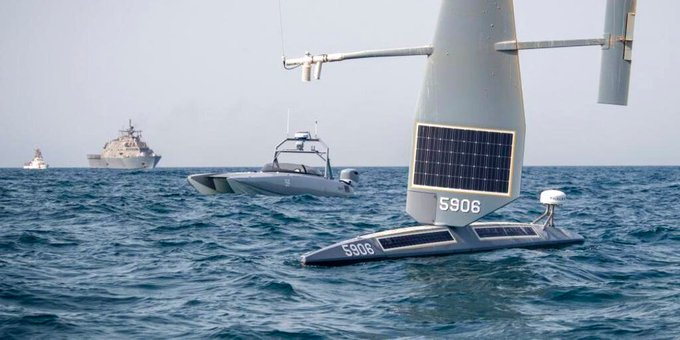In order to continue to discourage a prospective invasion of Taiwan and stay up with China’s military modernization, the U.S. has begun developing new kinds of weaponry.
U.S. military leaders have emphasized time and time again that they view China as the primary pace-setter for engagement and development, i.e., as a rival actively working to undermine American defense policy.
The Navy’s 5th Fleet has previously placed smaller drones of this kind in the waters around the Middle East, which is one way it has recognized water-born drones as a practical but expensive method to postpone that task.
During the summer, a multinational naval exercise will take place in the Pacific Ocean including four of the biggest drones now in service.
The drones would enable the Navy to meet three objectives—weapons range, scouting, and command and control—while maintaining fleet size in relation to China’s own expanding fleet. The technology would also prevent expensive errors that traditional ships have made recently.
A new aircraft carrier revealed flaws with its launch mechanism, many combat ships discovered they had propulsion issues after deployment, forcing them to retire early, and the ammunition for a stealth destroyer’s Advanced Gun System proved to be too expensive to maintain.
While Cmdr. Jeremiah Daley said that it’s a question of moving the technology ahead and having faith in the capacity, some claim that the Navy hurried to install too much new equipment to its boats.
For the next fiscal year, the Navy has allocated $433 million for crewless surface ships.
However, following years of unsuccessful ship initiatives, Rep. Elaine Luria, D-Va., caution in directing all resources toward robotic ships, despite the fact that advocates point out the cost-saving advantage of developing drones rather than ships.
The ability to deploy weapons for prolonged periods of time without risk or the requirement for human expense is the biggest advantage that drones provide. The sail-driven and solar-powered Saildrone is said to be able to deploy for months at a time without the need for resupply.
Sen. Mazie Hirono, D-Hawaii, leader of the sea power subcommittee, said she received assurances that the Navy is aware of not going too rapidly with unproven technology. Luria contends that the technology is just not developed enough to make a large investment.








